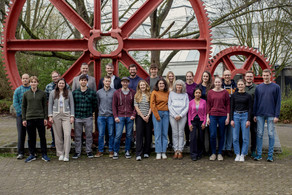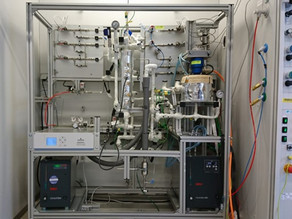Sugar acid production on gold nanoparticles in slurry reactor: Kinetics, solubility and modelling
B. Worgul; A. F. Aguilera; C. Vergat-Lemercier; K. Eränen; O. Simakova; H. Held; H. Freund; D. Y. Murzin; T. Salmi
Chem. Eng. Sci. 260 (2022) 117948
Abstract
Sugar acids obtained by oxidation of sugars are very valuable molecules which are used as chelating agents, binders as well as ingredients in pharmaceuticals. Arabinonic acid was prepared by oxidation of arabinose on gold nanoparticles deposited on an aluminium oxide carrier. A systematic reaction kinetic study was conducted to reveal the influence of oxygen partial pressure and pH on reaction rate and product selectivity. Experiments were carried out in a laboratory-scale semi-batch reactor which was operated at 70 °C and oxygen partial pressures 0.125–1.0 atm. The pH of the aqueous sugar solution was 6–8. Oxygen was continuously flowing through the semibatch slurry reactor and the pH was kept constant by adding NaOH during the experiments. The oxygen solubility in the reaction mixture was determined in separate experiments. A reaction mechanism was proposed for the formation of arabinonic acid (main product) and arabinolactone (intermediate by-product). The surface reaction of competitively adsorbed arabinose and oxygen was assumed to be rate determining for the arabinose consumption. For the formation of arabinonic acid from arabinolactone, the rate determining step was presumed to be the reaction between arabinolactone and sodium hydroxide. The reactor was described with the perfect backmixing model and the component mass balances were solved numerically during the estimation of kinetic parameters by nonlinear regression analysis. The kinetic model gives new insights in the reaction mechanism and described the experimental data very well. The model has potential for application in the oxidation of other monomeric sugars, too.




